You will soon notice, if you have not already, that I have been going on a binge of drinking samples from Yunnan Sourcing. This is an effort to find out how the difficult, drought-prone 2010 season affected Scott's range of cakes, before his 2011 range come out. Spring and summer are always exciting times in the world of pu'ercha.
The 2009 version has the charming wrapper-design common to the entire year's productions,
which appeals to me greatly
I want all of these cakes to be good. The sentimental value alone is high, given that they have been hand-selected by someone that has been instrumental in the Western-oriented market for pu'ercha. How much can reality live up to my hope and expectations?
The 2010 wrappers, while pleasant and clean, are not quite as charming to me
I have tried these two versions of the same family's produce at different times - perhaps almost one month apart. However, they are very similar. If anything, the 2009 version has a little more to say, but it is a close-run contest.
Both years have good, long leaves - the 2010 is shown above
...and here is the similar-looking 2009
The 2009 cake is $53/375g, while the 2010 was $35/250g - almost exactly the same price, per unit weight. Both are autumnal teas, which is an interesting choice. Perhaps Scott can only travel in the autumn.
The 2010, as with the 2009, looks good
The rinse from both is a yellow-orange colour, which looks healthy. Tell-tale signs appear in the aroma cup: it opens a little thin, before building into a thick, sticky sweetness. They are much the same in the mouth: an active, yet light, opening, which builds into a mouth-watering crescendo.
Scott wrote that he noticed a "chocolate-like" aftertaste. I can approximately see what it is that he might be referring to; I would instead describe it as the particulate, slightly sour aftertaste that I associate with heavy green vegetables, such as broccoli.
They are clean and clear, as with the majority of Scott's cakes, but... these Manzhuan cakes really don't seem to wish to be consumed. They are highly unfriendly, vacillating between overly vegetal/sour and slightly empty.
Leaves from the 2010 version
So, then, what do we conclude? I would have put my fairly negative experience with the 2009 Manzhuan down to a bad session, if it were not for experiencing the same again with the 2010. There are some lovely examples in the Yunnan Sourcing hand-selected range, but I found this pair to be unenjoyable.

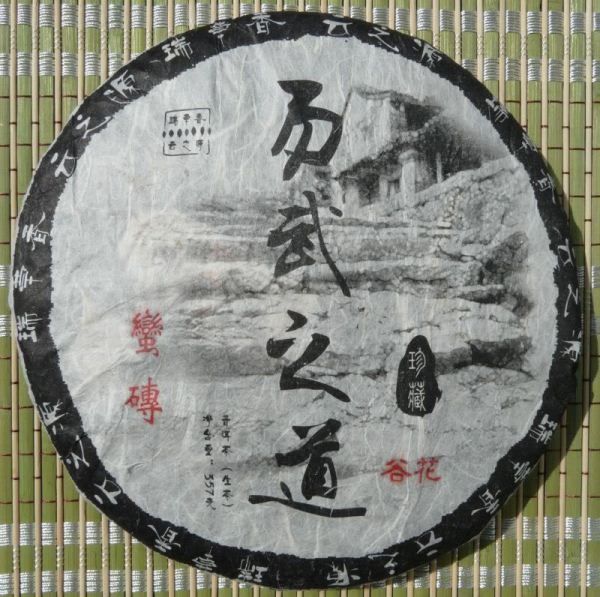
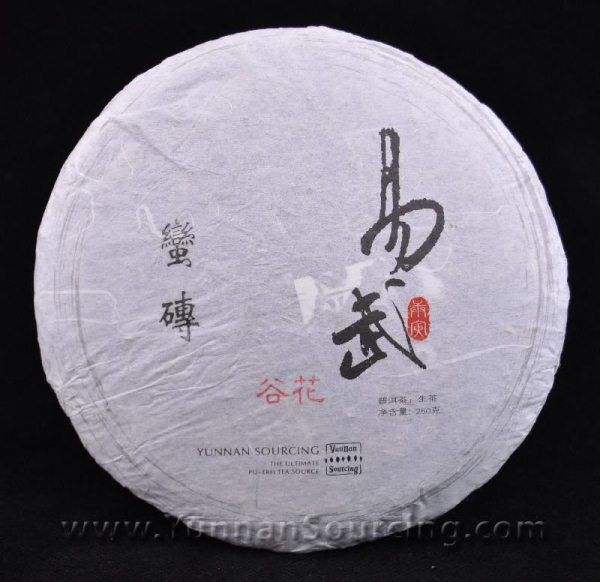
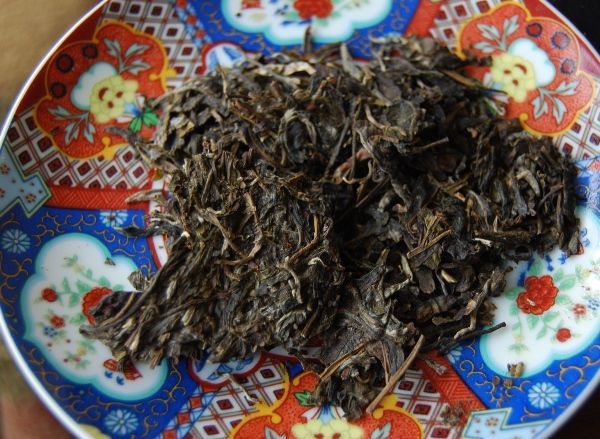
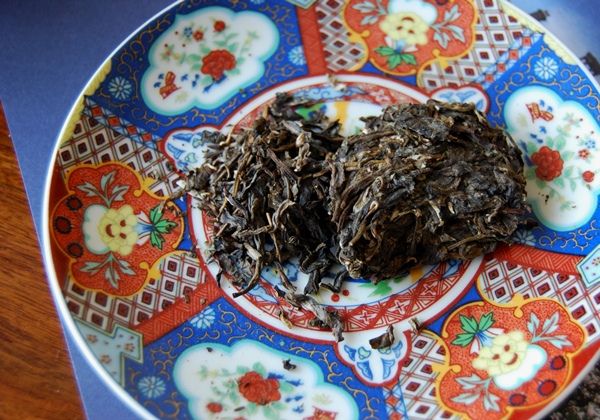
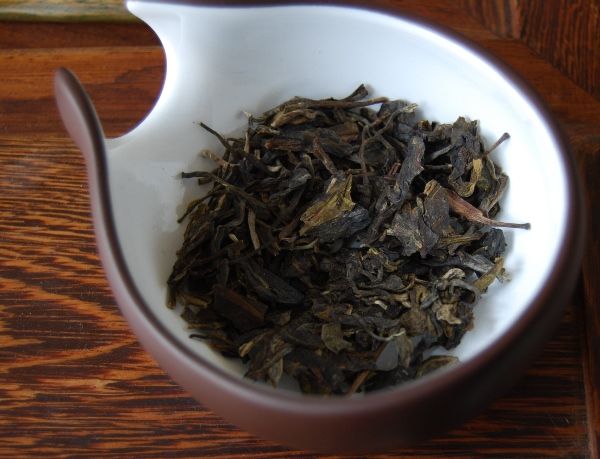
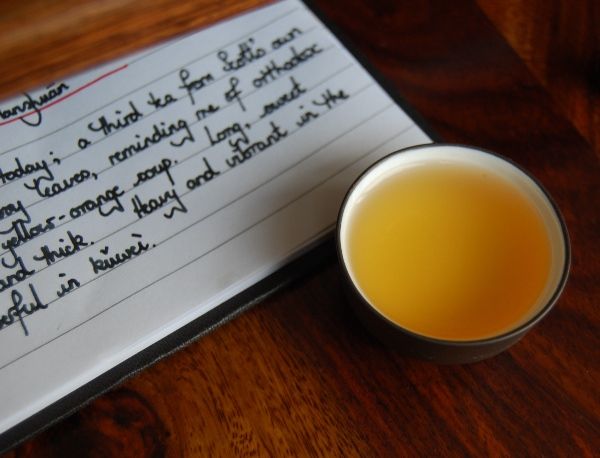

Call them as you see it. I have found your evaluations to be objective. Thanks
ReplyDeletei think the Manzhuan is sweet and nice and that 2008 Chenshenghao Nannuo is a very boring tea
ReplyDeleteDear All,
ReplyDeleteScott changed the wrapper design because of a quality issue.
I quote him thus:
"Yes… we changed our wrapper design. The wrapper design featured previously on this blog once printed turned out be too dark and not so nice. Also due to the heavy ink layers it was a little stinky too. So… we decided to go with something simpler. I hope you like our new wrapper design!"
This is from his blog and can be seen here: http://www.yunnansourcing.com/blog/?p=43#comments
All the Best,
Jason M. Cohen
Dear Hobbes,
ReplyDeleteAs a follow up,
what's with the celadon gaiwan?
I have always avoided them on principle, but your use of one has intrigued me.
Why celadon over porcelain?
All the Best,
Jason (again)
I also bought a 2009 Manzhuan from YS. I have truly enjoyed some of my brews from this cake but also some have been very disappointing. I found its possible to nurse some palatable brews from a greater portion of leaves then I would normally use and very short brewing times. It still turns sour on the tail end however.
ReplyDeleteI should also add to my last comments that I have only been able to truly enjoy the 3-4th batch of the Manzhuan. The other batches I am struggling to enjoy the tea. I remember several times offering this to friends and their reaction to me drinking it seems to be "you always seem dissapointed with your tea, I think it tastes great". Its probably an honest reflection of my desire to make this tea work and its not getting the perfection I desire. I think the point is.. you shouldn't have to struggle to enjoy it.
ReplyDeleteDear Jason,
ReplyDeleteThanks for the note describing Scott's change of heart regarding the wrappers. I hadn't noticed an aroma, but I don't have hundreds in close proximity (about six or so).
Why celadon? Merely that I fell in love with that particular gaiwan during a Maliandao exploration. I was looking for a gaiwan that was (i) pretty and (ii) immensely heavy. It fit the bill!
Dear James,
Thanks for your notes on the Manzhuan. You have clearly succeeded to find good brews in those leaves - I gave after after these two long sessions, and am passing the remainder of my samples onto someone else. :)
Toodlepip,
Hobbes